Dracaena marginata: description and care
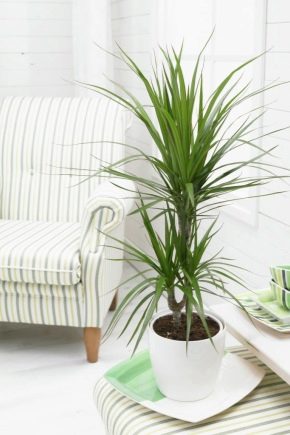
The tricolor tree dracaena marginata has long, like a belt, leaves and a high trunk. It does not provide for flowering. It can grow in a room or outdoors, if the climate permits, since such a plant is not adapted to cold weather. The crown will be beautiful and spreading if the grower takes proper care of it.
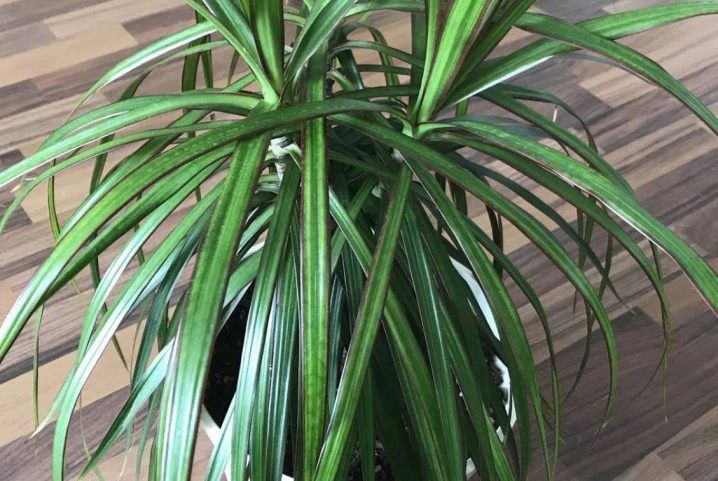
Peculiarities
Dracaena marginata grows upward. If necessary, trim the leaves remaining near the top of the trunk. Each leaf is bordered has red and green stripesthat make the plant colorful, even though it does not bloom. Such a palm tree easy to grow at home, while indoors a wide range of temperatures is permissible. For best results, choose a location with plenty of light but no direct sunlight.



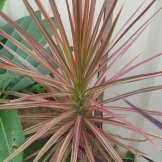
The species in question tolerates low light well, but in this case the foliage loses its attractive shade. The pot can be placed on a bed of damp pebbles to increase the moisture of the soil in the pot. Most professionals use loamy or peat drained soil... It keeps the soil evenly moist throughout the growing season. Watering is reduced from autumn to late winter.
Plants of different heights are allowed to be placed in the same container. Tall ones can be cut by removing the crown and rooting it afterwards.
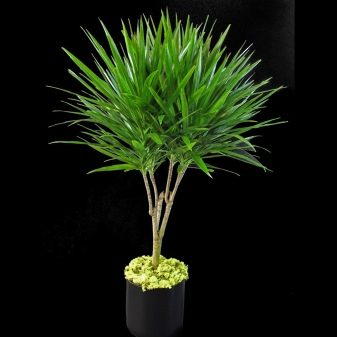
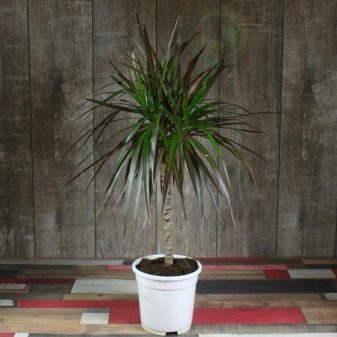
The described type of dracaena is a very popular houseplant that usually grows up to 6 meters or moreif you cut it off first. Slender gray erect stems topped with bundles of glossy sword-shaped leaves. They differ beautiful dark green color and narrow reddish edges. Lower leaves fall with age, leaving characteristic diamond-shaped scars on the stems.
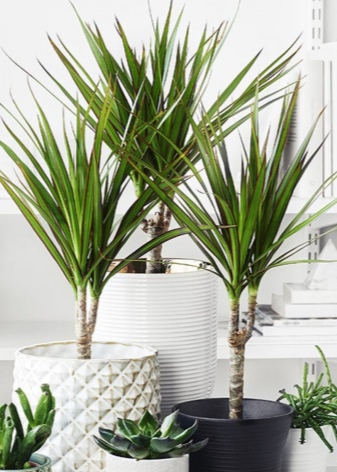
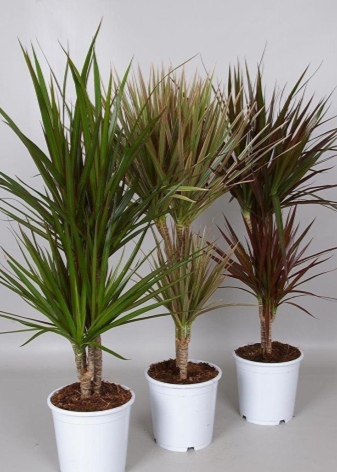
Fragrant tiny white flowers give way to spherical yellow-orange berries in spring. But they almost never appear on indoor plants. The species described is also sometimes called the "Spanish dagger" or the red dragon tree, sometimes the Madagascar dragon tree.
Varieties
This flower remains quite slender and tall even after years of growth and always looks great. Its rods are tough and strong, therefore they can hold perfectly without additional supports. Maybe it's aboutthe bottom of the cheapest houseplantswhich is the easiest to care for.
Another advantage is that such a tree will additionally purify the air in the room where it stands. This kind of natural filtration significantly improves the atmosphere.
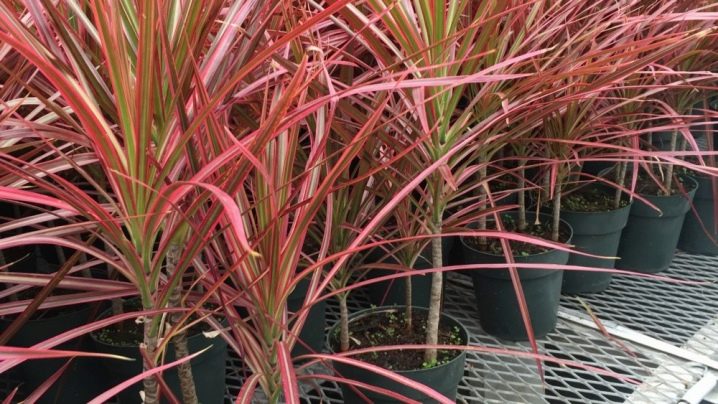
Subtype "Magenta" is represented by several varieties, among which you can choose something interesting for your room.
- "Bicolor"... A great solution that will help to green up an enclosed space, even if there is little sunlight inside. The plant absorbs harmful substances, which is important in offices where a lot of equipment works. The tree takes on a particularly attractive appearance when it becomes an adult. On average, each leaf stays on the trunk for two years, then falls off. Those that remain on top form a spreading crown.
Over the years, the plant rises up and already at the age of five very similar to a palm tree... On average, the trunk height can be up to 2.5 meters. The foliage is curved and narrow, up to 50 centimeters long. The color is green, the edges are painted red.

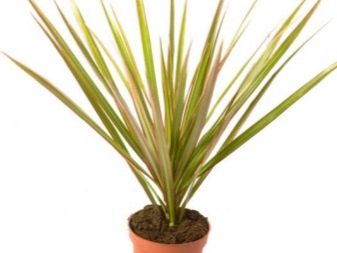
- "Tricolor". The same tree as the original, only has three colors on the leaves. Stripe of yellow tint separates the light green edges from the red tint. From the outside it seems that the plant is greenish-gold.

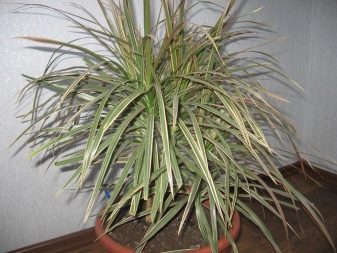
- Colorama. A new variety that grows more slowly than the original. This is the same tricolor on the leaves, except for the red stripe around the edges, which is more visible, so it seems that casting red or pinkish.
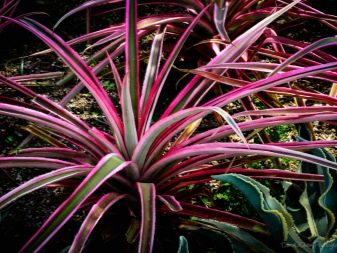

- "Tarzan". Its leaves are the same color as the original, but they are slightly stiffer, wider and thicker. At the very top of each stem there are spiky balls, which look like the end of a dragon's tail. New leaves emerge from the crown and are initially directed upward.
As they grow and are gradually replaced by fresh ones, the old ones change direction and when they become fully mature, hang down and turn yellow. Thus, the branches get longer and longer. Although it is a unique and interesting plant, it costs a lot therefore, you can not meet him so often.


Care
Taking care of dracaena at home is not so difficult. It grows rapidly, so it requires timely pruning, unless you want to have a tall palm tree. The grower will need to control the tree for the presence of spider mitesthat live and feed mainly on the underside of foliage. To remove them, you do not need to use chemicals, you just need to put the flower in the bath and rinse the leaves under a high pressure of water, for example, using a shower.
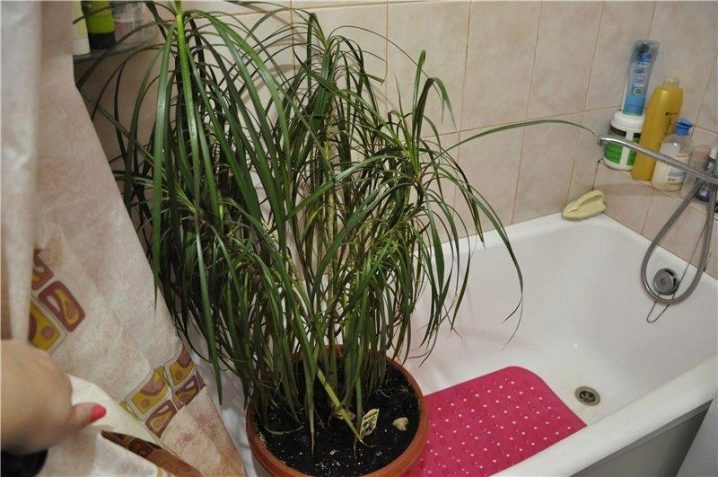
But treating mites is not the only way to care for a plant. She needs pruning, fertilization, compliance with certain conditions. The tree can form new roots; with age, the shoots must be transplanted into a new pot.
Temperature and humidity
The described plant does not like the cold, as it is accustomed to the tropical climate. His homeland is the Canary Islands. For this reason, in the room where the dracaena stands, the temperature should never drop below 10 ° C. If this condition is not observed, then the foliage will begin to rot, and the tree itself will die.
When the plant is transferred outside for the summer, it is worth remembering that at night the air temperature should not fall below the specified mark, because even a slight frost will kill the tree... The temperature range for ideal growth is between 16 ° C - 24 ° C.
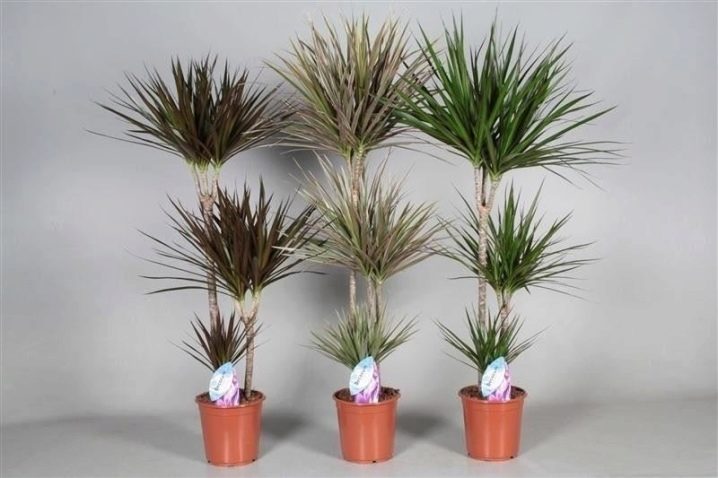
The plant has special requirements for moisture, so the grower must strictly monitor this parameter. The soil must remain moist, but not wet, as this will rot the roots. Dracaena can withstand a short drought, but no waterlogging. Reduce watering in the winter, because during this period a lot of water is not required for growth.
You need a reasonable humidity in the room, because sometimes it becomes noticeable how they appear on the foliage brown spots, which are the reaction of the flower to non-compliance with the conditions of detention. Specifically for this plant, this figure is from 60 to 100%.
You can maintain the required level with a spray bottle or simply by placing a humidifier.
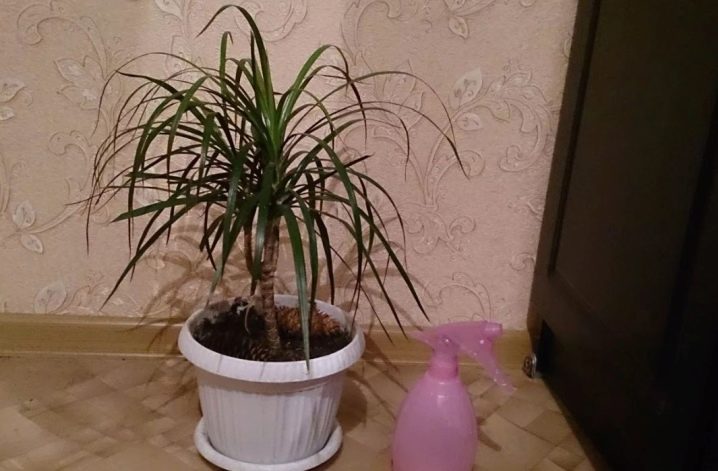
Lighting
Dracaena loves light and warmth, but does not like to be in direct sunlight, since in its natural environment it grows under the shade of taller tropical trees. An ideal location is where it is bright for most of the day, but the lighting is diffused. A window sill on the north side of the house is well suited. On the southern one, you can also put a pot, but position it so that the sun does not fall on the tree, otherwise spots will appear on the foliage.
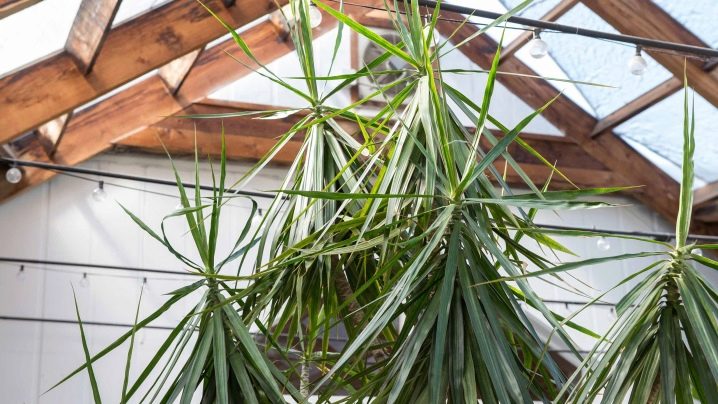
Fertilizer
As for the soil used, there is nothing special, the described plant only needs to dry it well and use a pot with drainage holes to prevent root rot. You can add stones to the bottom of the container to keep the water from stagnating. This and any other variety do not need a lot of fertilizers, but if you want to contribute to growth, then it is allowed to apply top dressing once a month during the growing season (spring, summer).
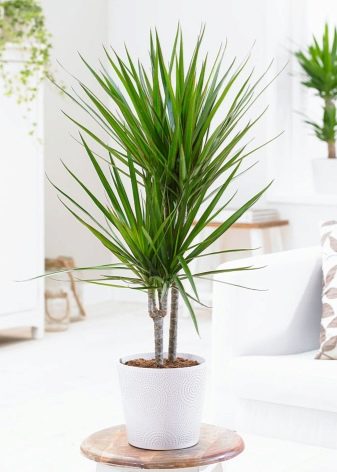
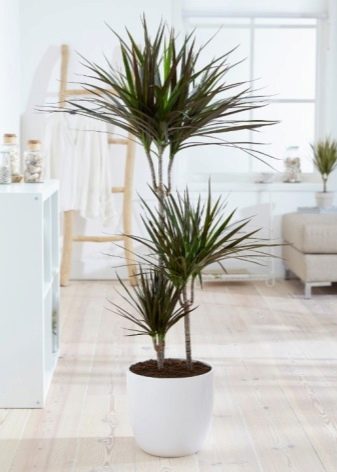
Organic dormant formulations are ideal for this. In the growing season, mineral complexes are used, which are widely used for deciduous plants. The easiest option is charcoal infusion.
Watering
It is necessary to water the plant when the soil has already dried out, while taking care of good drainage. For watering use warm water without fluorideso don't take from the tap. If there is a well, it is advisable to use water from there or rainwater, which must be heated before watering. If there are no such options, then you need to use distilled.
Water is poured into the pot until it flows through the drainage holes from the bottom onto the tray. It is drained 30 minutes after watering, when all the excess has already flowed out. If rot and an unpleasant odor appear, this means that the breeder too often moistened the soil and the plant began to rot. In this case, you can still help, for this you just need to wait until the soil dries out, and subsequently establish the correct mode of soil moistening.
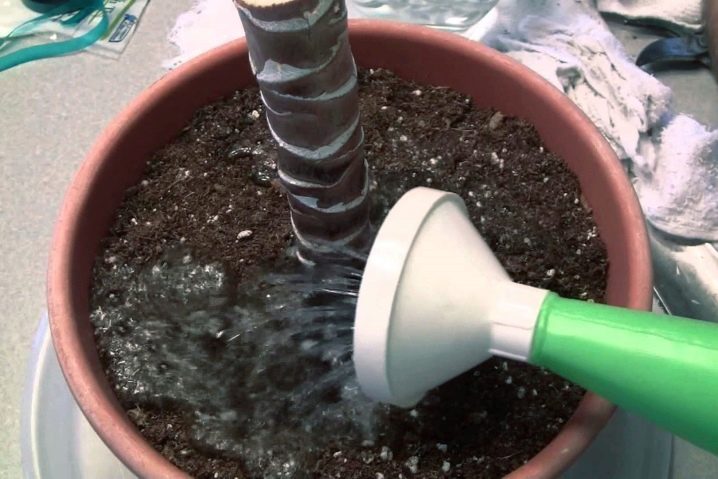
Pruning and shaping the crown
Adult plant need to be cut in a timely mannerthus forming an attractive crown. Cut off the main stem of the tree if the stem gets too tall. Pruning is done to the desired height using scissors. The top can then be planted in the ground and it will germinate, forming a new tree. A bare trunk will develop two or more side branches and new foliage under the cut.
Dracaena can grow for several years without pruning if size is not an issue for the room.
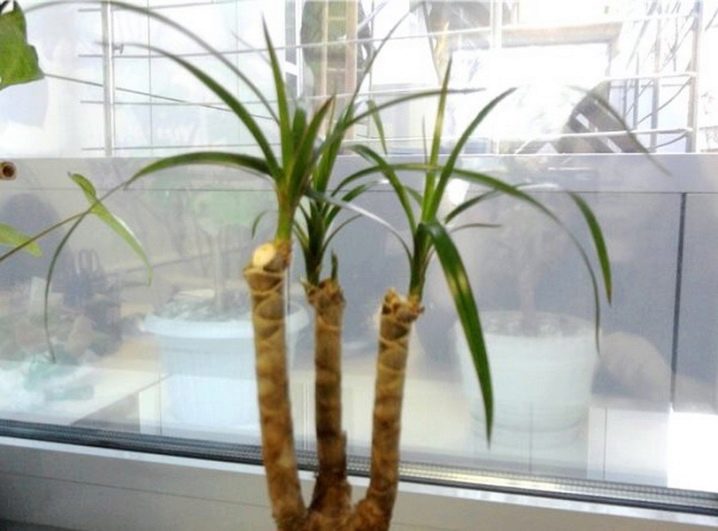
Transfer
After purchase, you will need to transplant dracaena in large capacity... To do this, the house needs land, a pot with good drainage. The soil can be bought ready-made or you can make it yourself. Before transplanting, fertilizer is not used for a month, after that they also wait until the tree is acclimatized, otherwise an additional load will be exerted on it.
It is necessary to transplant the plant in the spring, until the growing season has begun and it is still in a state of sleep. As a rule, they are transplanted when the capacity becomes too small and the root system can no longer develop normally.
These trees grow exceptionally fast, so every few years the container is replaced with a large one.
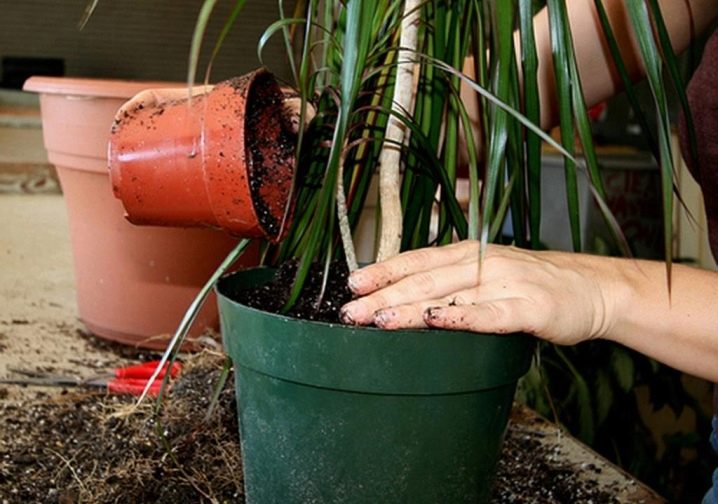
Reproduction
Since it is not so easy to get the seeds of this plant, cuttings remain the simplest and most affordable option for breeding dracaena. There are three main ways:
- trunk;
- top;
- air outlet.
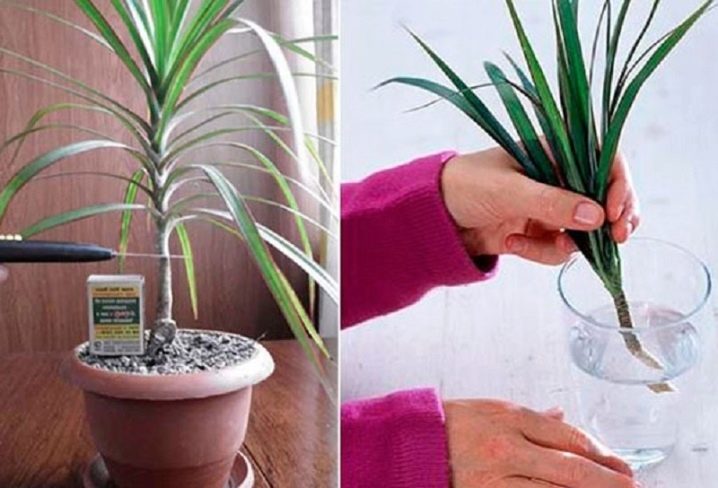
The third among them is the most difficult, as it requires attentiveness, care and time-consuming. To do this, in the place where the old leaves fell off, make an incision, insert a toothpick, put moss, moisten it with water, then wrap it with polyethylene so that moisture can evaporate from above, and the plant breeder can add water from the spray bottle from above. After a few months or earlier, a separate shoot will appear, which can be transplanted into the ground, where it will feel great and grow.
Most often just cut off the top, which allows not only to change the appearance of the crown on the old plant, but also to get a new, strong and beautiful tree. The planting material is placed in the lower part for several days in a solution with a growth enhancer, and then in moist soil.
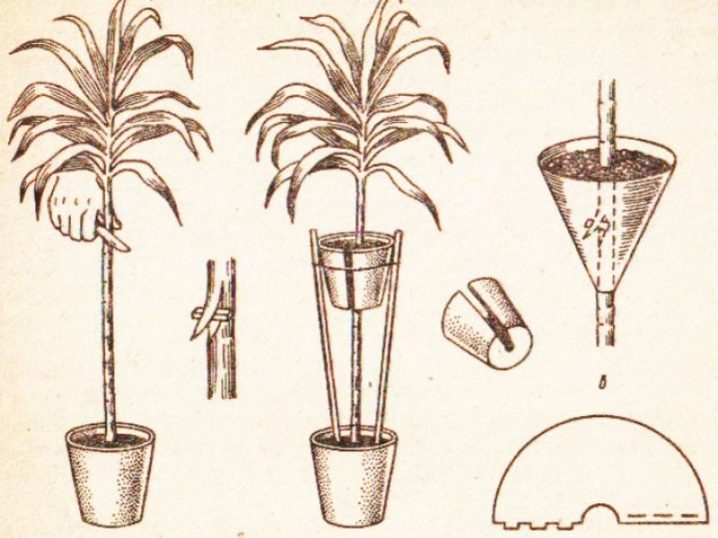
Stem propagation allows you to grow several trees at the same time. To do this, the cut trunk is first dried for several days at room temperature, then cut into pieces. Each should be stuck into the ground with the growth side up. Each piece must be at least 3 centimeters long.
If the planting material is planted in the soil, it will need to be kept warm and moist, and when they try to root it in water, the liquid is changed every day and made sure that it is not cold. After the required number of roots has appeared, the plant is planted in potting compost.
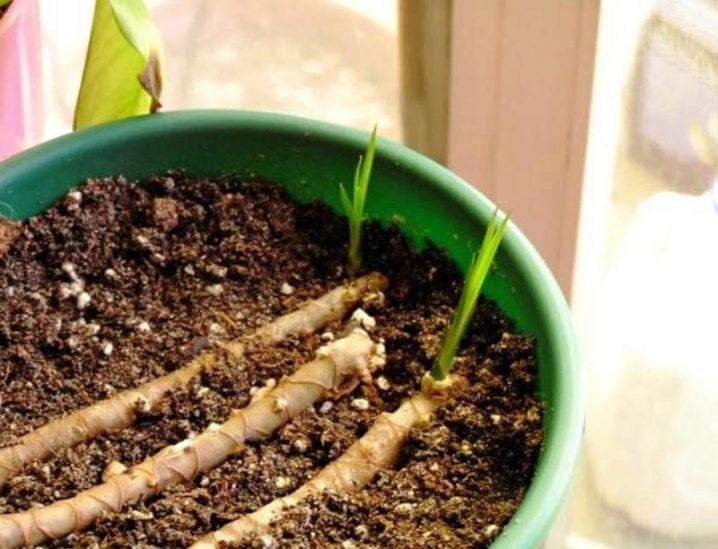
Diseases and pests
If we talk about diseases and pests, then this the plant suffers from them infrequently, but still, plant breeders have to face a number of problems, and this is not only a spider mite, which can be washed off with plain water to get rid of it. It also happens that the foliage falls off, the tips of the leaves dry. In this case, the actions of the grower depend on the cause of the problem.
Spider mites, mealy bugs can attack a tree even in indoor conditions. So that they do not even come close to it, you need to often spray the leaves with water. If infestation has been noticed, add some liquid soap to the water, it should kill them all.

Root rot and leaf blight are a standard problem for all indoor plants. In addition, dracaena is quite sensitive to fluoride, which is found in tap water. Using filtered or distilled water for irrigation helps the plant feel healthy. You can find out that the plant suffers from toxicity by the leaves, which begin to turn yellow at the tips, deform, they appear brown spots.
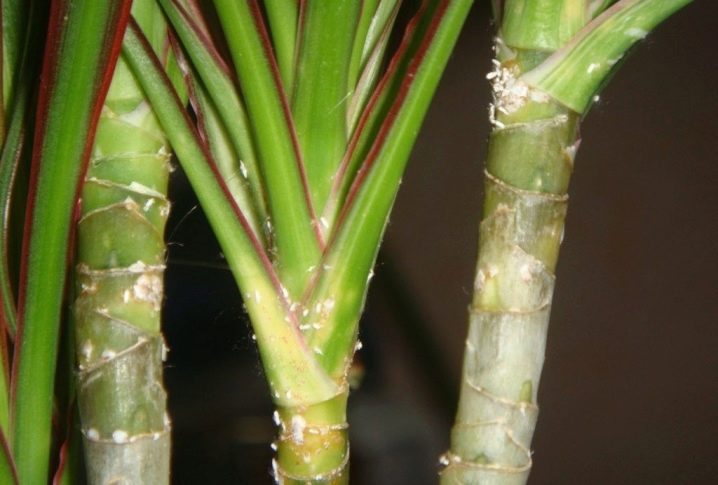
If the new foliage grows very small, there is almost certainly too little light in the room. When it simply falls off for a few weeks, it is not a sign that the tree is dying, in fact it is a normal process. But that's when it appears unhealthy yellownesswatering may not be done often enough.
Soft stemon the contrary, it reflects too much moisture that has entered the plant, or that it has suffered from exposure to cold temperatures. If this happened, then the tree is probably already dead. If the crown is still intact, you can try cutting it off and germinating it.
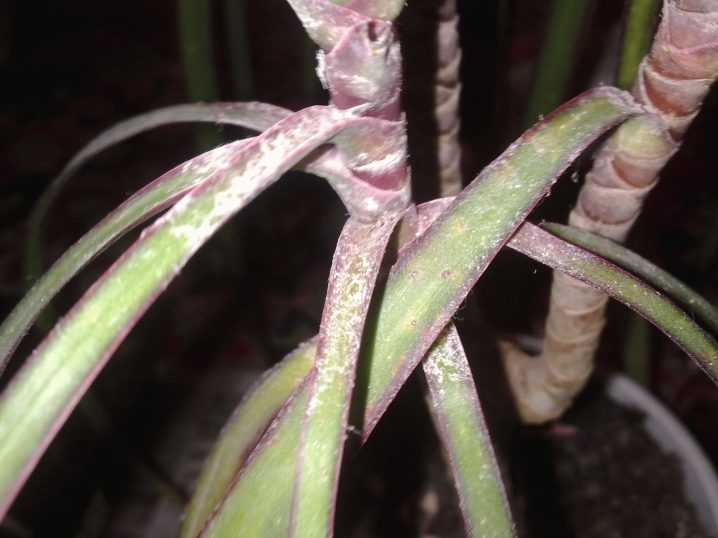
Leaves with brown spots - also a sign of a lack of moisture. Brown tips and yellow edges are a symptom of dry air or cold drafts nearby. Discolored and scorched leaves - too much light.
Treatment from mealy bugs according to the description assumes the use of cotton wool dipped in denatured alcohol. The foliage and stem are gently rubbed over it. On defeat red spider mite you can spray with insecticides. But at home it is better not to use chemicals indoors, but simply to increase the humidity.
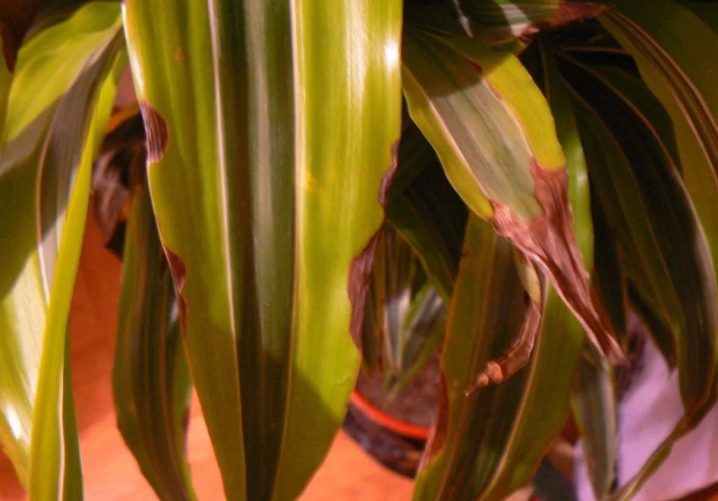
For information on how to properly care for homemade dracaena marginata, see the next video.































The comment was sent successfully.